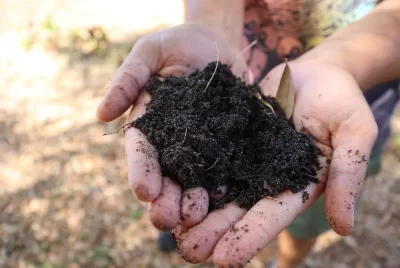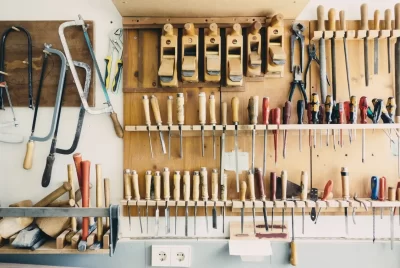How To Use a Scraper Tool: Full Overview
As an avid DIY enthusiast and garage aficionado, I am always on the lookout for tools that make my projects easier and more efficient. One such tool that has become indispensable in my garage is the scraper tool. In this article, I will share my knowledge and experiences on how to use a scraper tool effectively, providing you with helpful suggestions along the way.
Introduction
Before we delve into the specifics, let’s first understand what a scraper tool is. A scraper tool is a handheld implement designed for scraping and removing unwanted material from various surfaces. It typically consists of a handle and a sharp-edged blade, making it ideal for tasks such as paint removal, surface cleaning, and rust scraping.
What is a Scraper Tool?
A scraper tool is a versatile tool that can be used in a wide range of applications. It is commonly used in woodworking, automotive repairs, and general maintenance tasks. With its ability to scrape away unwanted substances, a scraper tool proves invaluable when dealing with surfaces that require cleaning or preparation.
Types of Scraper Tools
Scraper tools come in various shapes and sizes, each designed for specific purposes. Here are three common types of scraper tools you may encounter:
Flat Scraper Tools
Flat scraper tools, as the name suggests, have a flat blade edge. They are excellent for removing paint, varnish, or adhesive residues from flat surfaces such as walls, floors, or wooden furniture. The flat design ensures even pressure distribution, making it easier to achieve a smooth and consistent scrape.
Hooked Scraper Tools
Hooked scraper tools feature a curved blade with a hook-like shape. This design is particularly useful for removing old caulk or silicone sealant from corners, edges, and joints. The hooked edge allows for precise maneuvering and scraping in hard-to-reach areas.
Curved Scraper Tools
Curved scraper tools have a blade with a gentle curve. This design is suitable for removing rust, corrosion, or paint from curved surfaces such as pipes, tubes, or car body panels. The curved shape ensures maximum contact with the surface, making scraping more efficient.
Benefits of Using a Scraper Tool
Removing Paint and Varnish
When it comes to paint removal, a scraper tool is your best friend. Whether you’re repainting a piece of furniture or restoring a vintage car, a scraper tool allows you to efficiently strip away layers of old paint and varnish. Unlike other methods like sanding or chemical strippers, a scraper tool provides greater control and precision, minimizing the risk of damage to the underlying surface.
Scraping Rust and Corrosion
Rust and corrosion can be stubborn adversaries, especially in the garage where metal surfaces are exposed to moisture and other corrosive elements. A scraper tool with a curved or flat blade is perfect for scraping away rust and corrosion, preparing the surface for treatment or painting. By removing the damaged layers, you ensure a smooth and clean surface that promotes better adhesion of protective coatings.
Cleaning Surfaces
Whether it’s removing adhesive residues, stickers, or grime, a scraper tool is a versatile cleaning companion in the garage. Its sharp blade can easily scrape off stubborn substances without the need for harsh chemicals or excessive scrubbing. From cleaning tools and equipment to prepping surfaces before applying new finishes, a scraper tool makes the process quick and hassle-free.
Proper Technique for Using a Scraper Tool
To make the most of your scraper tool and achieve optimal results, it’s essential to follow the proper technique. Here are some key steps to keep in mind:
Selecting the Right Scraper Tool
Depending on the task at hand and the surface you’re working on, choose the appropriate scraper tool. Consider factors such as the type of blade, handle grip, and overall size that best suits your needs. Having the right tool ensures efficiency and minimizes the risk of damage to the surface.
Preparing the Surface
Before you start scraping, prepare the surface by removing any loose debris or materials. Clean the area and ensure it’s dry and free from any obstructions that might interfere with the scraping process
Applying the Correct Pressure
Apply firm but controlled pressure when using the scraper tool. Avoid excessive force that may cause gouging or scratching of the surface. Let the sharp edge of the blade do the work, and maintain a consistent pressure for smooth and even scraping.
Scraping in the Proper Direction
For efficient scraping, follow the natural grain or direction of the surface. This ensures better control and prevents the scraper tool from slipping or digging into the material. Adjust your angle and technique based on the contours of the surface you’re working on.
Safety Precautions When Using a Scraper Tool
While a scraper tool is a handy tool to have, it’s important to prioritize safety during its usage. Here are some safety precautions to consider:
- Always wear protective gloves and safety goggles to shield your hands and eyes from flying debris or sharp edges.
- Work in a well-ventilated area or use a respirator if there’s a possibility of inhaling dust or fumes during scraping.
- Keep your fingers and hands clear of the blade’s path to avoid accidental cuts or injuries.
- Store your scraper tool securely after use, ensuring the blade is covered to prevent accidental contact.
Maintenance and Care for Scraper Tools
To prolong the lifespan of your scraper tools and maintain their effectiveness, regular maintenance is essential. Here are a few maintenance tips:
- Clean the blade after each use to remove any residue or buildup that can affect its performance.
- Check the blade for any signs of damage or dullness. Replace or sharpen the blade as needed.
- Store your scraper tools in a dry area to prevent rust or corrosion. Consider using blade covers or sheaths for added protection.
Alternatives to Scraper Tools
While scraper tools are highly versatile and efficient, there are alternatives worth exploring depending on your specific needs or preferences. Here are a few alternatives to consider:
- Sandpaper: Sandpaper is a common alternative for removing paint, varnish, or rust. It works by abrasive action, gradually wearing away the unwanted material. Sandpaper comes in different grits, allowing you to adjust the level of abrasiveness based on the task at hand.
- Chemical Strippers: Chemical strippers are useful when dealing with stubborn or thick layers of paint or varnish. They work by breaking down the bonds between the coating and the surface, making it easier to scrape or wipe away. However, it’s important to follow safety guidelines and use chemical strippers in a well-ventilated area.
- Heat Guns: Heat guns are effective for softening paint or varnish, making it easier to scrape off. By directing hot air onto the surface, the heat gun softens the coating, allowing it to be scraped away more effortlessly. Heat guns require caution and should be used with care to avoid damaging the surface or causing accidents.
- Power Sanders: Power sanders, such as orbital sanders or belt sanders, are efficient tools for large-scale paint or varnish removal. They use rotating abrasive discs or belts to quickly and evenly sand away the unwanted coating. Power sanders are ideal for larger projects but may require more caution and skill to achieve desired results.
Remember to choose the alternative that best suits your specific needs and the surface you’re working on. Each method has its advantages and considerations, so weigh them accordingly.
Conclusion
In conclusion, a scraper tool is a valuable asset in any garage or DIY enthusiast’s toolkit. Its versatility, efficiency, and ability to tackle various tasks make it a go-to tool for paint removal, rust scraping, and surface cleaning. By following the proper techniques, ensuring safety precautions, and maintaining your scraper tools, you can achieve professional-level results with ease.
So, the next time you have a project in the garage that requires surface preparation or cleaning, reach for your trusty scraper tool. You’ll be amazed at its effectiveness and how it simplifies your tasks while providing excellent results.
Frequently Asked Questions
Q1. Can I use a scraper tool on delicate surfaces like glass or polished wood?
It’s not recommended to use a scraper tool on delicate surfaces like glass or polished wood as it may cause scratches or damage. Opt for alternative methods such as gentle solvents or specialized tools designed for these surfaces.
Q2. How often should I sharpen the blade of my scraper tool?
The frequency of blade sharpening depends on usage and the condition of the blade. As a general guideline, inspect the blade regularly and sharpen it whenever you notice dullness or reduced effectiveness.
Q3. Can I use a scraper tool for removing wallpaper?
Yes, a scraper tool can be used for removing wallpaper. However, it’s essential to wet the wallpaper first with warm water or a wallpaper removal solution to soften the adhesive before scraping.
Q4. What should I do with the scraped-off debris or paint chips?
Collect the scraped-off debris or paint chips using a dustpan or a disposable container. Dispose of them properly according to local regulations, as they may contain hazardous materials.
Q5. Can I use a scraper tool on a car’s painted surface?
While a scraper tool can be used on a car’s painted surface for certain tasks like removing rust or paint, extra caution is necessary to avoid damaging the underlying paint. Use a gentle touch, follow the contours of the surface, and consider alternative methods for delicate areas.
Remember to always prioritize safety and refer to the manufacturer’s instructions for specific guidance on using your scraper tool effectively and safely.
Summary
By following these frequently asked questions and their answers, you can enhance your knowledge and confidently use a scraper tool for various applications in your garage or DIY projects. Remember to prioritize safety, choose the right scraper tool for the task, and enjoy the benefits of this versatile tool in your projects.
I hope this comprehensive article has provided you with valuable insights on how to effectively use a scraper tool in your garage. By understanding the different types of scraper tools available, their benefits, and proper techniques for usage, you can accomplish your projects with ease and achieve professional-level results.
Using a scraper tool allows you to remove paint and varnish, scrape rust and corrosion, and clean surfaces efficiently. It’s crucial to select the right scraper tool for each task, prepare the surface properly, apply the correct pressure, and scrape in the proper direction to ensure optimal results.
While scraper tools are versatile and indispensable, it’s important to be aware of alternative methods depending on your specific needs and preferences. Sandpaper, chemical strippers, heat guns, and power sanders can provide alternatives for certain tasks or surfaces.
Always keep in mind that safety should be your top priority. Follow manufacturer instructions, exercise caution, and adapt your approach based on the surface and task at hand.
In conclusion, using a scraper tool in the garage can significantly simplify your projects and yield excellent results. Whether you’re a DIY enthusiast or an experienced professional, having this versatile tool in your arsenal will enhance your capabilities and make your tasks more efficient.
So, grab your scraper tool, put on your protective gear, and embark on your next garage project with confidence. Enjoy the satisfaction of achieving clean surfaces, removing unwanted materials, and bringing new life to your projects with the help of this invaluable tool. Happy scrapping!




